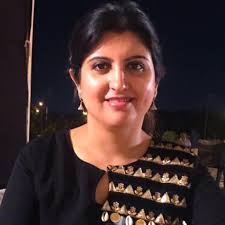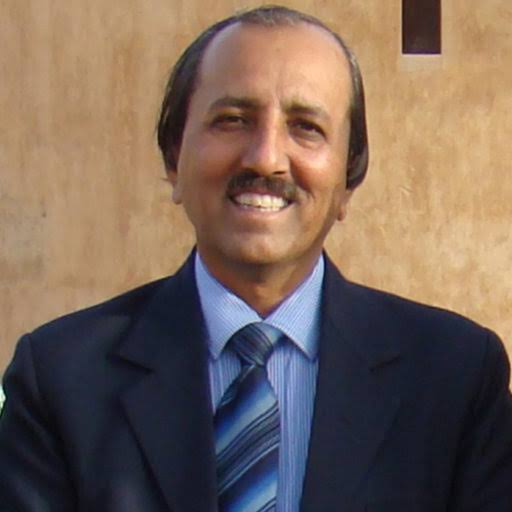Congenital cataract has a worldwide prevalence of 4.24 per 10,000 people, with the largest prevalence found in Asia (1). It is one of the most important causes of treatable causes of childhood blindness (2).
1.Timing of cataract surgery
In order to prevent stimulus deprivation amblyopia, children with dense visually significant bilateral congenital cataracts, surgery should be done at around 6–8 weeks of age (3) and in children with a unilateral visually significant cataract it should be done at the age group of 4-6 weeks (4) due to increased rates of postoperative glaucoma in the first four weeks of life (5).
2.Biometry
In small children, axial length can be measured using an immersion/contact A-scan or B-scan ultrasonography. While using contact A-scan values, the value with maximum anterior chamber depth should be chosen to offset the inadvertent indentation of the cornea with the A-scan probe (6). Keratometry values can be obtained using an auto-keratometer. Readings should preferably be taken without using the eye speculum, thereby avoiding compression of the globe (7). Optical biometry with IOL master or Lenstar can be carried out in older cooperative children(8). Intraocular lens (IOL) power calculation in children should be done to have a moderately hypermetropic postoperative refractive outcome in order to compensate for the myopic shift which is expected in children due to axial elongation of the globe. IOL can be implanted in eyes with an axial length of more than 17 mm and corneal diameter of more than 10 mm (9). SRK/T and the Holladay 2 formulae have been shown to have the best postoperative outcomes in pediatric eyes with axial length less than 20 mm axial length (10). In the Infant Aphakia Treatment Study, Vanderveen et al. have shown that SRK/T and Holladay 1 have the least prediction error in infants (11). In the study by Dahan et al., 20% undercorrection is proposed in children < 2 years and 10% in children between 2 to 8 years of age (12).
3.Incision:
A superior clear corneal triplanar incision of 2.2/2.8 mm is preferred in children which allows the wound to be protected by the upper eyelid in the formative trauma-prone years of childhood (9).
Scleral incisions approximately 2 mm from the limbus with conjunctival peritomy are rarely used unless we opt for a rigid polymethyl methacrylate intraocular lens (13). Smaller incisions help in the better maintenance and stability of the anterior chamber(14). Two uniplanar 1 mm incisions approximately 180 degrees apart give better manoeuvrability.
4.Anterior capsulorhexis
One in 1,00,000 preservative-free adrenaline should be used for pupillary dilatation if the pupil is not adequately dilated preoperatively with tropicamide 0.8% and cyclopentolate 0.5%. The anterior capsule is stained with the trypan blue dye (0.06%) with or without air-fill to make the extremely elastic capsules of children rigid and stiff (15). Anterior continuous curvilinear capsulorhexis (CCC) can be done manually, starting with the cystitome and completing using the utrata forceps after filling the anterior chamber with high viscosity viscoelastic (16). Femtosecond laser can also be employed for performing anterior capsulotomy(17). It should be made smaller than the IOL optic diameter to prevent shallowing of the anterior chamber and postoperative pupillary capture(16).
5.Hydroprocedures
Multiquadrant hydrodissection is done using a cannula mounted on a 2cc disposable syringe filled with the balanced salt solution. At least three quadrant hydrodissection should be done to facilitate easy lens matter aspiration.
6. Lens matter aspiration (LMA)
It is done either using the coaxial or bimanual irrigation and aspiration handpieces followed by implantation of single‑piece foldable acrylic (preferably hydrophobic due to less posterior capsular opacification and pigmentary deposits(18–20)) on the IOL (16).
7. IOL implantation
The anterior chamber is filled with high viscosity viscoelastic, and then after loading the IOL, it is inserted by pushing the leading haptic underneath the anterior capsule and then pushing the trailing haptic into the bag using a sinskey hook(21). Though single-piece hydrophobic IOL is preferred for in-the-bag placement, a three-piece IOL can be used in cases of inadvertent posterior capsular rupture which makes it difficult to insert and stabilize the single-piece IOL. Monofocal IOL is preferred in children; however, multifocal IOL can be considered in children > 5 years with bilateral cataract (22).
8.Peripheral iridectomy
It is preferred in patients with aphakia, uveitic and traumatic cataracts using a vitrector. Bleed occurring during iridectomy and be managed successfully using intracameral adrenaline as well as with an air/ viscoelastic tamponade.
9.Primary posterior capsulotomy and anterior vitrectomy
Due to the considerable risk of visual axis obscuration in children due to posterior capsular opacification, primary posterior capsulotomy and anterior vitrectomy should be done using a 20/23/25gauge vitrector in the cut-irrigation/aspiration mode. This is done in patients less than eight years old, mentally retarded children, and those having nystagmus(16). Posterior capsulorhexis should be made a little smaller than the anterior capsulorhexis in order to allow posterior optic capture for preventing posterior capsular opacification (23).
10.Suturing
Low scleral rigidity, increased elasticity, and more vitreous up thrust in children less than two years makes it imperative to suture the wounds with 10-0 nylon monofilament to prevent anterior chamber collapse. However, for children more than two years of age, leaving the clear corneal incisions sutureless is a viable option after ensuring proper wound hydration as it significantly decreases the surgical time, avoids suture-related complications, decreases the need for repeated anesthesia for suture removal and decreases the incidence of endophthalmitis (16). Preservative‑free moxifloxacin (0.05 cc) is given intracamerally at the end of the surgery, and subconjunctival dexamethasone 0.5 ml is injected to decrease the postoperative inflammation.
Postoperatively, topical corticosteroids are given for 6-8 times a day tapered over 4-6 weeks, topical antibiotics (24) four times a day, and topical cycloplegics for a period of 2 weeks in uncomplicated cataract surgery (8, 25).
In the follow-up period, glasses/contact lens needs to be prescribed for visual rehabilitation to prevent squint and amblyopia in the future (26).
Summary
A congenital cataract is an important treatable cause of childhood blindness. It should be managed promptly to achieve good visual acuity. In-the-bag placement, along with primary posterior capsulotomy and anterior vitrectomy, is essential in the younger age group. Postoperative care and follow up are inevitable to achieve an optimal outcome.
References:
1. Wu X, Long E, Lin H, Liu Y. Prevalence and epidemiological characteristics of congenital cataract: a systematic review and meta-analysis. Sci Rep. 2016 23;6:28564. 2. Pi L-H, Chen L, Liu Q, Ke N, Fang J, Zhang S, et al. Prevalence of eye diseases and causes of visual impairment in school-aged children in Western China. J Epidemiol. 2012;22(1):37–44. 3. Lundvall A, Kugelberg U. Outcome after treatment of congenital bilateral cataract. Acta Ophthalmol Scand. 2002 Dec;80(6):593–7. 4. Medsinge A, Nischal KK. Pediatric cataract: challenges and future directions. Clin Ophthalmol. 2015 Jan 7;9:77–90. 5. Infant Aphakia Treatment Study Group, Lambert SR, Buckley EG, Drews-Botsch C, DuBois L, Hartmann E, et al. The infant aphakia treatment study: design and clinical measures at enrollment. Arch Ophthalmol. 2010 Jan;128(1):21–7. 6. Wilson ME, Trivedi RH. Axial length measurement techniques in pediatric eyes with cataract. Saudi J Ophthalmol. 2012 Jan;26(1):13–7. 7. Trivedi RH, Wilson ME. Keratometry in pediatric eyes with cataract. Arch Ophthalmol. 2008 Jan;126(1):38–42. 8. Mohammadpour M, Shaabani A, Sahraian A, Momenaei B, Tayebi F, Bayat R, et al. Updates on managements of pediatric cataract. J Curr Ophthalmol. 2018 Dec 22;31(2):118–26. 9. Khokhar SK, Pillay G, Dhull C, Agarwal E, Mahabir M, Aggarwal P. Pediatric cataract. Indian J Ophthalmol. 2017 Dec;65(12):1340–9. 10.Vasavada V, Shah SK, Vasavada VA, Vasavada AR, Trivedi RH, Srivastava S, et al. Comparison of IOL power calculation formulae for pediatric eyes. Eye (Lond). 2016 Sep;30(9):1242–50. 11. Vanderveen DK, Trivedi RH, Nizam A, Lynn MJ, Lambert SR, Infant Aphakia Treatment Study Group. Predictability of intraocular lens power calculation formulae in infantile eyes with unilateral congenital cataract: results from the Infant Aphakia Treatment Study. Am J Ophthalmol. 2013 Dec;156(6):1252-1260.e2. 12. Dahan E, Drusedau MU. Choice of lens and dioptric power in pediatric pseudophakia. J Cataract Refract Surg. 1997;23 Suppl 1:618–23. 13. Joseph E, Meena C. Pediatric cataract. Kerala J Ophthalmol. 2018;30(3):162. 14.Vasavada AR, Nihalani BR. Pediatric cataract surgery. Curr Opin Ophthalmol. 2006 Feb;17(1):54–61. 15. Dick HB, Aliyeva SE, Hengerer F. Effect of trypan blue on the elasticity of the human anterior lens capsule. J Cataract Refract Surg. 2008 Aug;34(8):1367–73. 16. Sen P, Chandra K, Jain E, Sen A, Kumar A, Mohan A, et al. Audit of 1000 consecutive cases of sutureless cataract surgery in children above two years of age. Indian J Ophthalmol. 2020;68(3):460–5. 17. Dick HB, Schultz T. Femtosecond laser-assisted cataract surgery in infants. J Cataract Refract Surg. 2013 May;39(5):665–8. 18. Plager DA, Lipsky SN, Snyder SK, Sprunger DT, Ellis FD, Sondhi N. Capsular management, and refractive error in pediatric intraocular lenses. Ophthalmology. 1997 Apr;104(4):600–7. 19. Ram J, Brar GS, Kaushik S, Gupta A, Gupta A. Role of posterior capsulotomy with vitrectomy and intraocular lens design and material in reducing posterior capsule opacification after pediatric cataract surgery. J Cataract Refract Surg. 2003 Aug;29(8):1579–84. 20. Ram J, Jain VK, Agarwal A, Kumar J. Hydrophobic acrylic versus polymethylmethacrylate intraocular lens implantation following cataract surgery in the first year of life. Graefes Arch Clin Exp Ophthalmol. 2014 Sep;252(9):1443–9. 21. Khokhar S, Sharma R, Patil B, Sinha G, Nayak B, Kinkhabwala RA. A safe technique for in-the-bag intraocular lens implantation in pediatric cataract surgery. Eur J Ophthalmol. 2015 Feb;25(1):57–9. 22. Ram J, Agarwal A, Kumar J, Gupta A. Bilateral implantation of multifocal versus monofocal intraocular lens in children above 5years of age. Graefes Arch Clin Exp Ophthalmol. 2014 Mar;252(3):441–7. 23. Gimbel HV, DeBroff BM. Intraocular lens optic capture. J Cataract Refract Surg. 2004 Jan;30(1):200–6. 24. Hashemian H, Mirshahi R, Khodaparast M, Jabbarvand M. Post-cataract surgery endophthalmitis: Brief literature review. J Curr Ophthalmol. 2016 Sep;28(3):101–5. 25. Lim ME, Buckley EG, Prakalapakorn SG. Update on congenital cataract surgery management. Curr Opin Ophthalmol. 2017 Jan;28(1):87–92. 26. Hiatt RL. Rehabilitation of children with cataracts. Trans Am Ophthalmol Soc. 1998;96:475–515; discussion 515-517.

